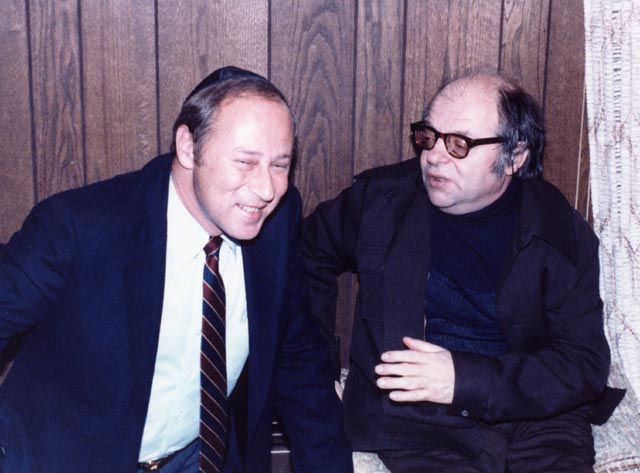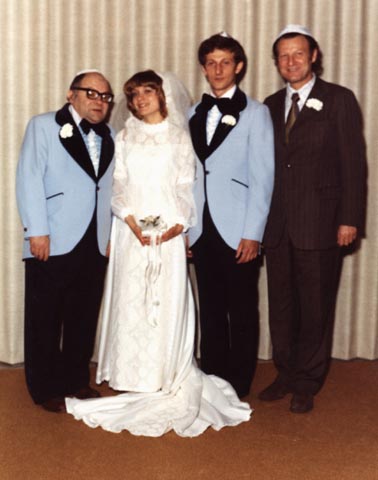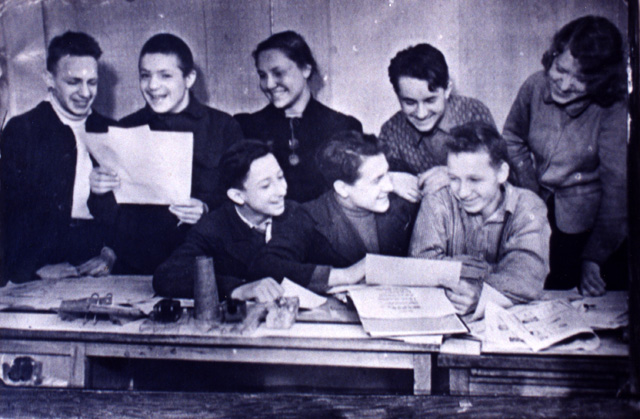
Paul and Naum
Paul, Naum, and
Jewish Geography
Let me segue into a phenomenon that I have come to
call Jewish Geography. It is a feeling of connectedness that I feel to some of
the Jews whom I encounter in my life’s journey. This feeling of connectedness
may arise because the people are somehow related to me or they are relatives of
friends. Even if a connection isn’t readily apparent, it feels as if there
should be one. Perhaps this comes from being a descendant of the Ba’al Shem Tov,
whose teachings touched so many Jewish lives.
My sense of Jewish Geography began in 1973. Bob Gordon, one of the founders of
Action for Soviet Jewry, was a speaker at a Passover sedar at Temple Beth El In
Sudbury, Massachusetts, and he brought along a Russian family that had recently
immigrated to the United States. The father was a refusnik, who had spent part
of his life in a gulag in Siberia. (Refusniks were Jews who were imprisoned,
harassed, and/or denied the right to work under the false guise of national
security simply because they had requested permission to emigrate from the
Soviet Union.) This refusnik was Naum Mandel.
In an emotional speech in Russian, Naum addressed the sedar participants and Bob
translated. Naum was pouring out his sense of loss of Mother Russia and what it
meant to be free in a new land.
Less than a year later, my uncle Yitzchok (Rabbi Samuel Israel Korff), Baruch’s
oldest brother, called the family together and announced that he had found a
Russian cousin, a rabbi who had gotten out of Russia and was now living in
Israel with his family. Yitzchok then introduced us to the rabbi and his
daughter Nava.
Nava told us that we had another cousin in America who had recently immigrated
but she didn’t know how to find him. She said the cousin was a famous Russian
poet. So I started describing Naum, and she said, “that may be him.” So I called
our rabbi, who gave me the number of the person who organized the sedar, and
eventually I was able to track down Naum. Our Russian guest spoke to Naum’s wife
Luba, and she started screaming, “Where are you, where are you?”
 |
|
Paul and Naum |
Naum and his family were about three miles away. We
were in Newton; they were in Brookline. So we piled into my big Chrysler station
wagon and went out to retrieve Naum, along with Luba (who was his second wife)
and their daughter, and we brought them back to Yitzchok’s house. It was a
joyful, unexpected family reunion. We were speaking in a cacophony of languages:
Hebrew, Yiddish, Russian, English, and French.
In 1975, my mother decided to go to the Soviet Union, and Naum asked her to
bring some things to his friends and to his daughter Lena by his first wife,
Vaila. In Leningrad, my mother met Lena and her fiancé, Victor Taratuta, a
budding physicist. A few months later, Victor received a visa to the United
States and Yitchok’s son, David Korff, arranged for him to enroll as a student
in the physics department at Lowell Tech (now the University of Massachusetts at
Lowell). My mother made all the preparations for the wedding.
 |
 |
|
Lena Mandel with her mother, Vaila |
The bride and groom flanked by their fathers |
 |
|
Lena and Victor about to leave on their honeymoon |
Anyway, in Ukraine, Naum’s friend Ritali, not only gave me a picture of Naum as a young man, but he filled in Naum’s history for me, what it was like to live as a Jewish dissident under Soviet rule.
 |
|
Naum Moiseevich Mandel as a young man. He is standing, second from the left. |